Adaptive, Sustainable Options for Waterwise Utahans Red Butte Garden
“Dramatic curving stone walls … transform the hillside into a sculptural composition of vegetation, masonry, flat planes, and sensual slopes. … Stone colors soften as they ascend the slope, reds and oranges within the lower portions of the Garden; beiges and creams predominate in the upper regions. The lower walls are the most refined and gardenesque. The uppermost walls are the most rustic and naturalistic, echoing the foothills rock formations.”
These beautiful words of designer Tres Fromme (3 Fromme Design) describe the impact of Red Butte Garden’s three-acre Water Conservation Garden. The garden, designed by Studio Outside (Dallas, Texas) and 3 Fromme Design (Sanford, Flordia), recently earned Studio Outside a well-deserved Award of Excellence from the Texas Chapter of the American Society of Landscape Architects.
The Water Conservation Garden opened to the public in May 2017, but planning for the project began years before. Because Utah is the second driest state in the nation, a major focus of the Water Conservation Garden from the beginning was to provide a living showcase of beautiful and dense plantings while using less water than more traditional gardens. The Water Conservation Garden is arranged around eleven themes and offers a range of gardening aesthetics to entice different tastes. Each theme demonstrates a unique way that waterwise plants, both native and non-native, can be used in landscaping to reduce water use and entice people to conserve water.
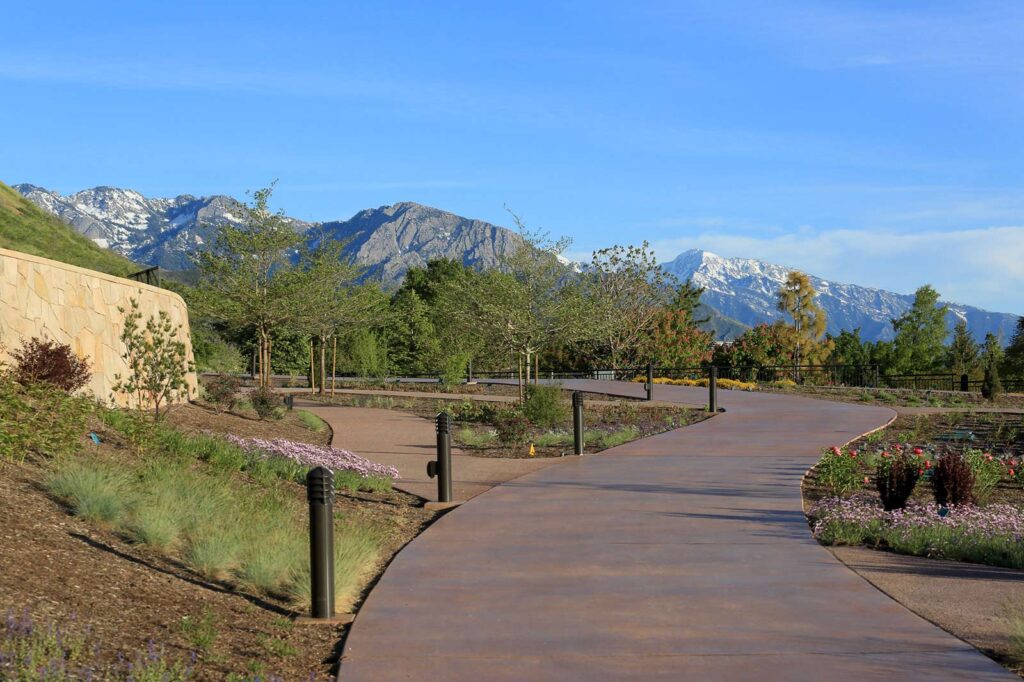
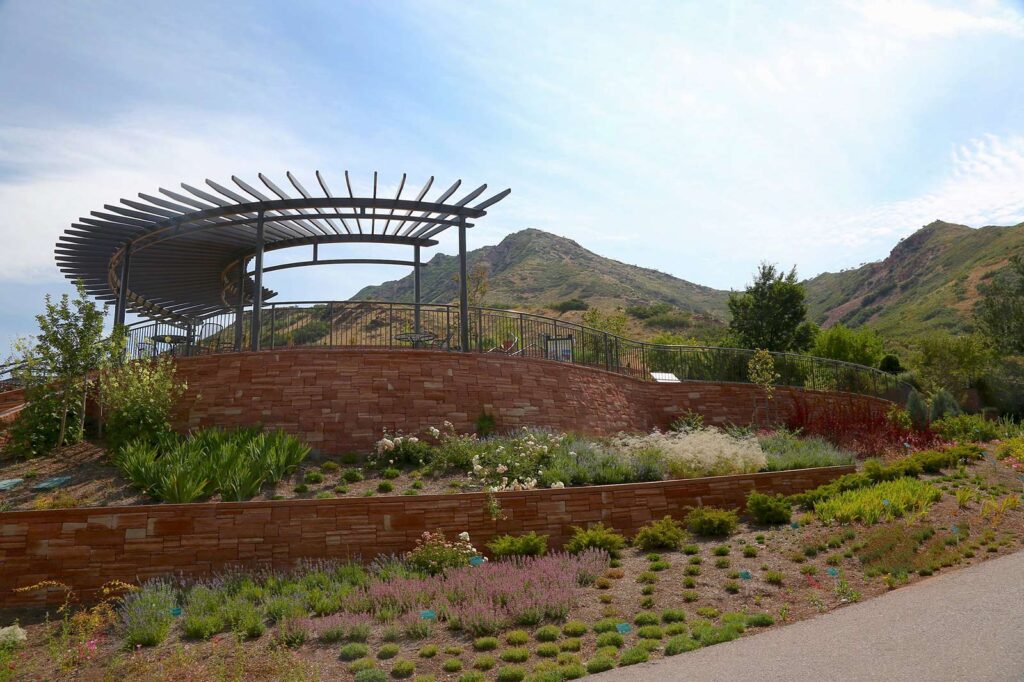
From bold sweeps of ground covers to masses of waterwise shrubs, the garden includes an impressive diversity of plants. More than 460 different species were obtained from sources across the Salt Lake valley and western states, or grown at Red Butte Garden. A few endangered plants are featured, including Uinta Basin hookless cactus (Sclerocactus wetlandicus) and Pariette cactus (Sclerocactus brevispinus), and the rare but culturally important Four Corners potato (Solanum jamesii). Coordinating the procurement of plant material was a challenging but necessary task in order to fill one of Red Butte Garden’s largest landscaped gardens.
Education as well as inspiration awaits the visitor. Interpretation throughout the garden describes the many ways that incorporating water-wise and native plants into a landscape design can reduce water use. The signage shows how to design, plant, and irrigate plants according to their respective water requirements (“hydro-zones”) and install efficient irrigation methods and systems to capture and reuse rainfall in the landscape. Additional materials explain how various plant adaptations reduce the loss of water they absorb from the landscape. Where native plants are used, the public is able to learn how those natives support local wildlife, including native bees and pollinators.
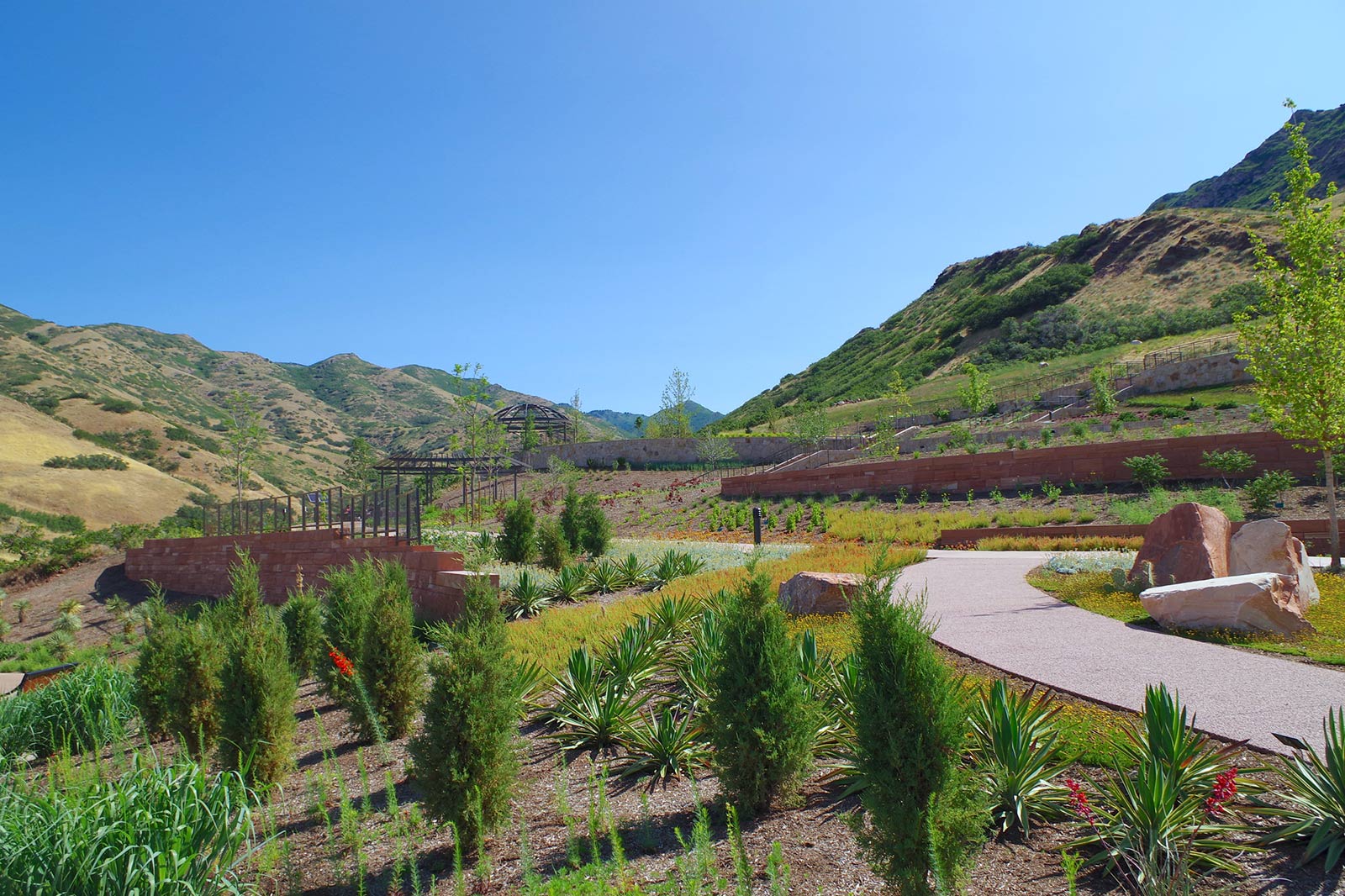
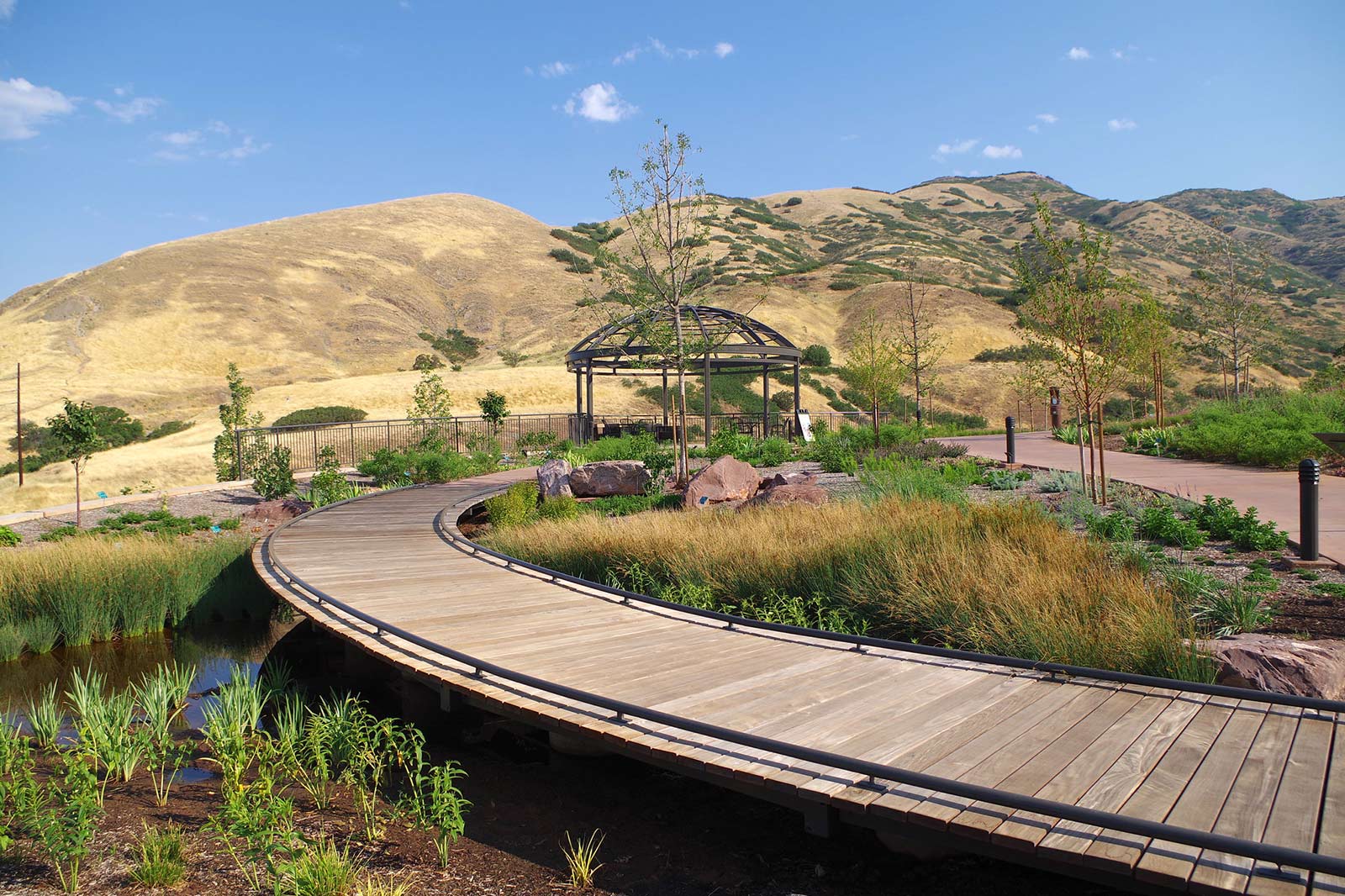
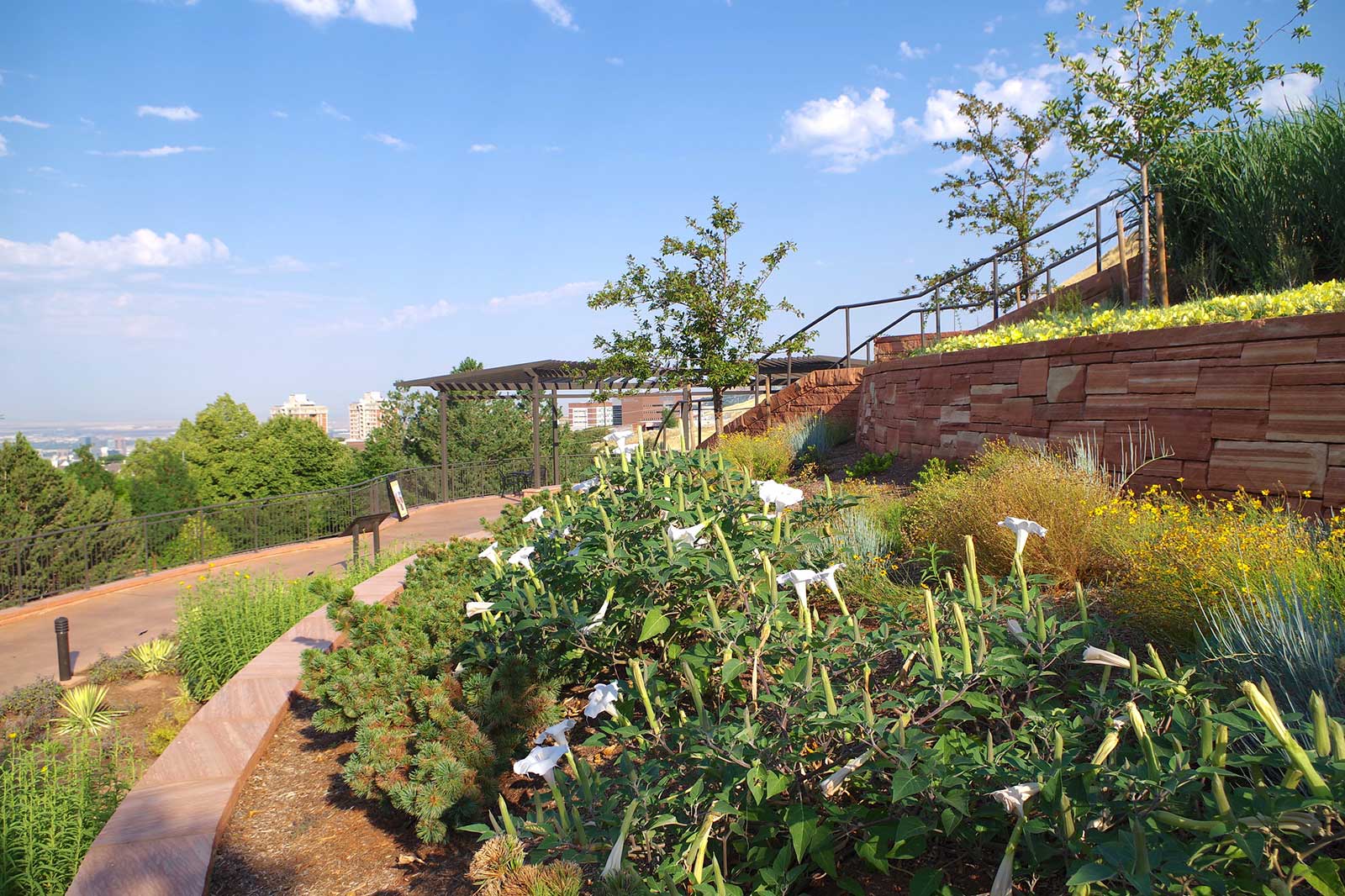

In addition to promoting water conservation, the guiding principles of the project addressed a broad range of sustainability practices and goals. These included considerations for the identification and sourcing of plants; reusing site resources, such as topsoil and boulders; and using local, sustainably produced, and recyclable materials. Being water-wise, however, was the central focus. Many methods for achieving that are showcased. In multiple areas, the garden collects and reuses rainwater on-site through a passive rainwater harvesting system. To maximize water-efficient irrigation, 85% of the beds are irrigated with low-volume drip emitters and check valves, and highly efficient sprinkler nozzles replace traditional spray heads in the remaining locations. The overall system also includes “smart” irrigation technology with an on-site weather station and irrigation management software.
Successful completion of the project required continual communication and collaboration between the project design firms, Gramoll Construction, project managers from the University of Utah and Red Butte Garden, and Garden staff, including the Executive Director, Development staff, and Horticulture and irrigation staff. The stunning results are perfectly designed to inspire Utahans to embrace a new, water-wise approach to landscaping.
Water Conservation Garden Themes
- Waterwise Mixed Border — Drought-tolerant and -adapted plants, displayed in a western interpretation of the classic English perennial border, showcase how gardeners can maintain traditional aesthetics with water-wise plantings.
- Adaptive Beauty — Hardy plants, whose appearances or lifecycles (such as summer dormancy) directly relate to their water-conserving physiological adaptations.
- Groundcover Tapestry — Patterns of large-scale, crisp, bold sweeps of groundcover perennials and ornamental grasses run perpendicular and parallel to the slope, with accents of shrubs, small trees, and evergreens.
- Prospect Point Pavilion and Rain Garden — An open-air pavilion serves as a gathering place and landmark, beckoning guests to the upper portions of the Garden with colorful adjacent plantings of shrubs, perennials, ornamental grasses, and bulbs.
- Desert Harvest — A series of five depressed planting beds show how vegetable, herb, and fruit production can be achieved in dry land climates. Woody shrubs and fruit trees requiring larger amounts of water flourish in the lower levels. Plants tolerating drier conditions are found higher up on the basin walls and rims, sharing space with nitrogen fixers and pollinator-friendly plants.
- Gravel Garden — This small section overlooking the entire Water Conservation Garden uses plants 12 inches tall or less, showcasing both ornamental characteristics and extreme resilience.
- Flowering Shrub Hillside — This west-facing slope is planted in masses of waterwise shrubs. It derives inspiration from the patterns of native vegetation on the distant hillsides and the seasonal changes and transformations of the native landscape.
Photos: All photos courtesy of University of Utah.